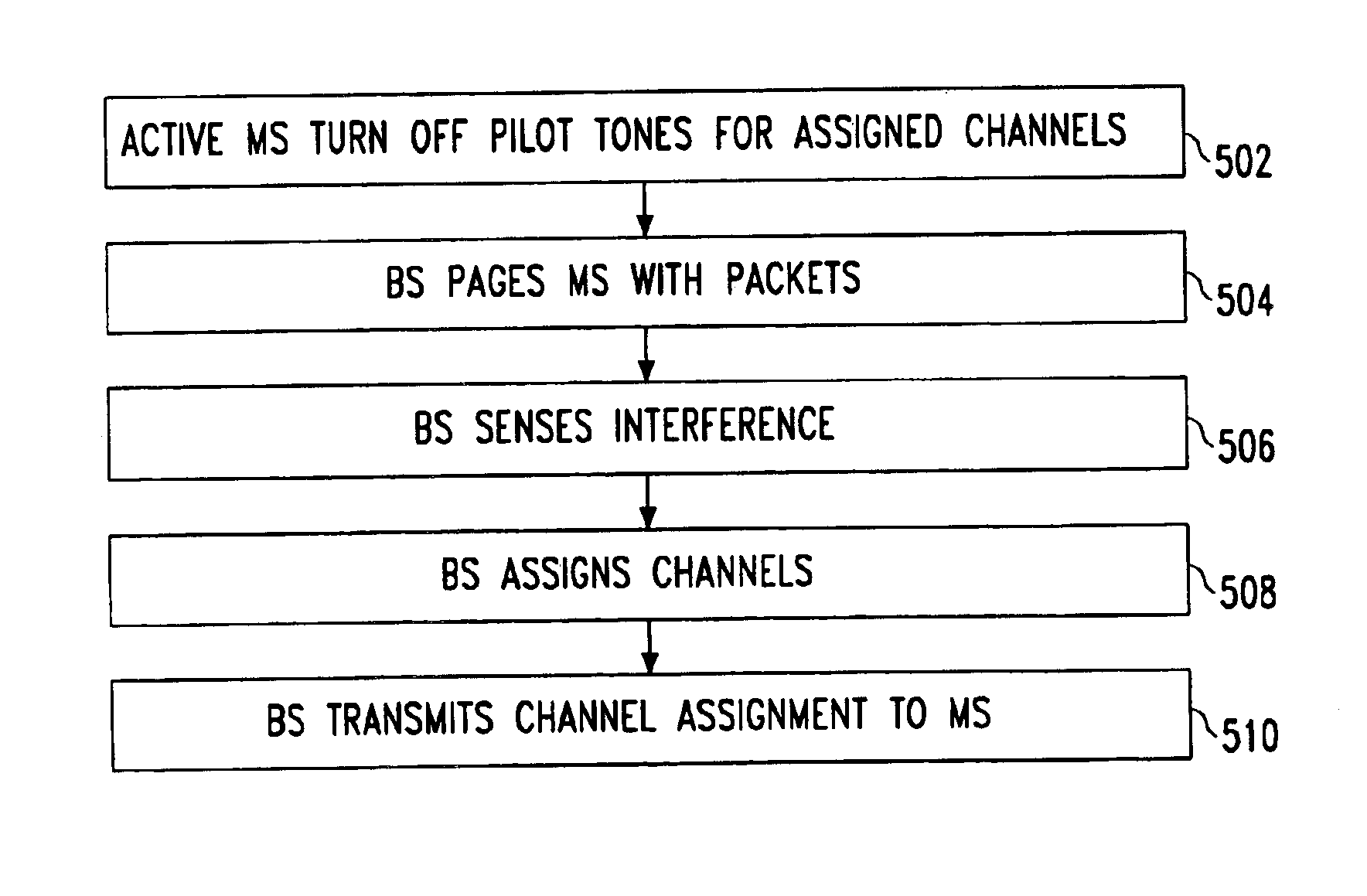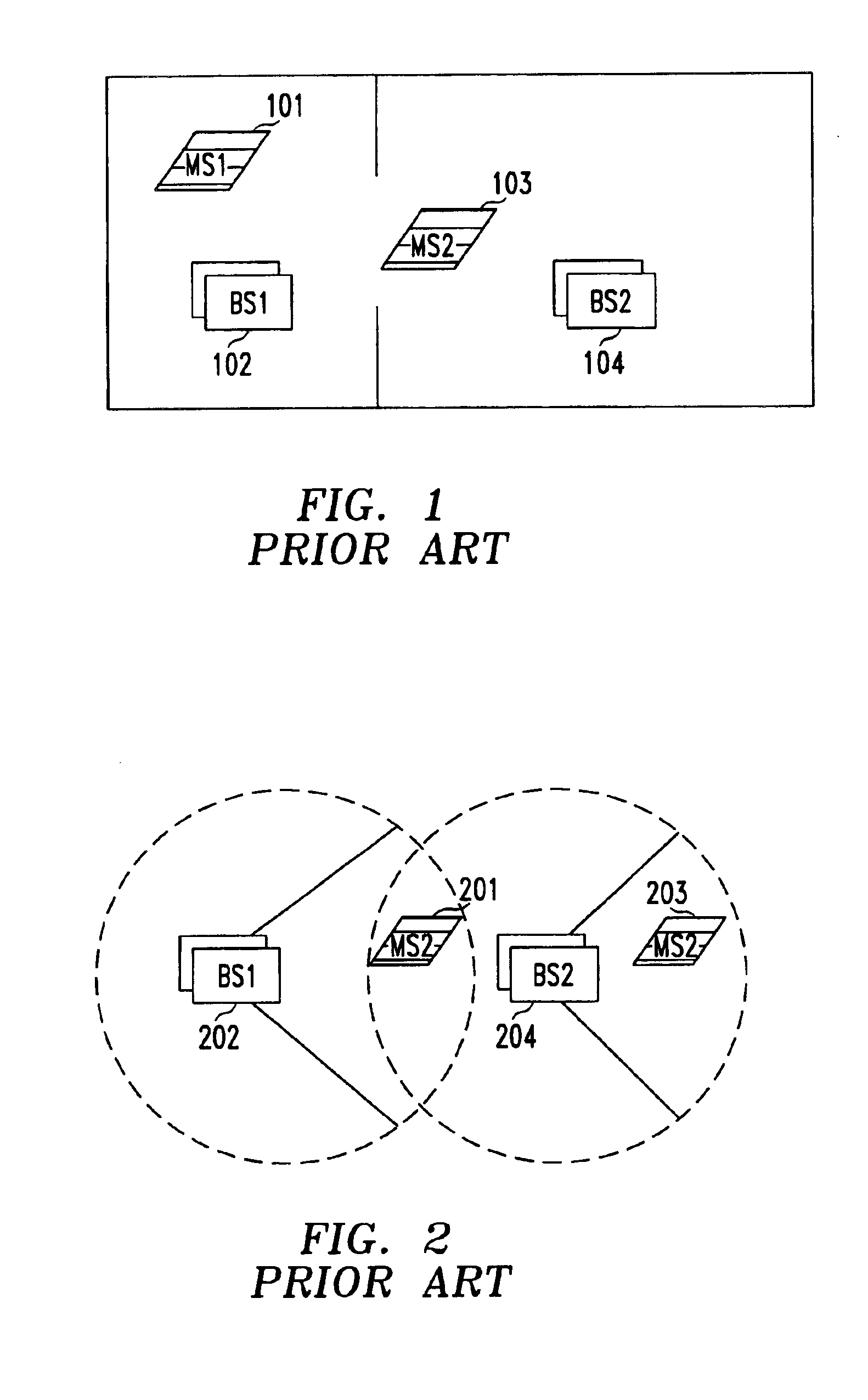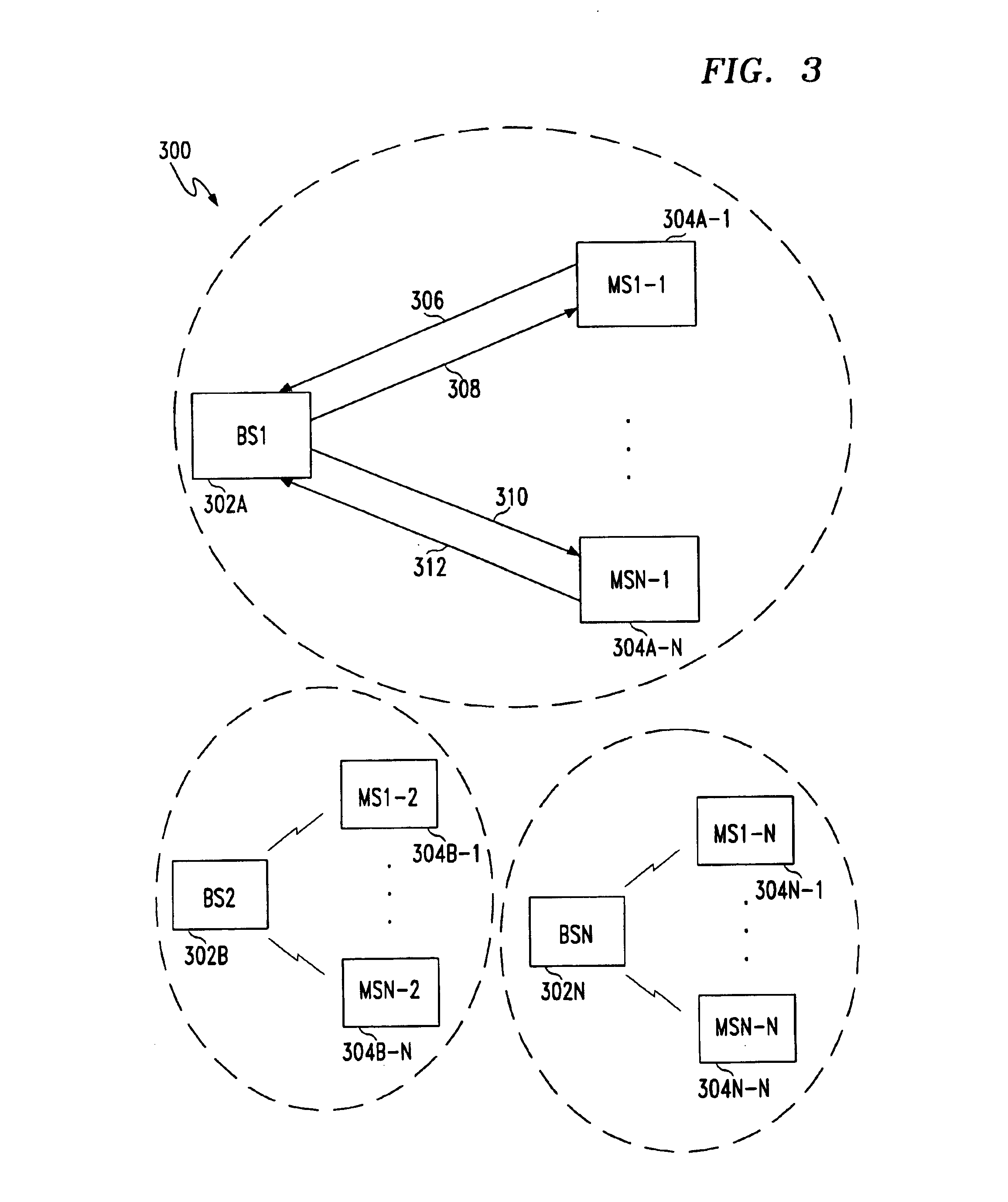Asymmetric measurement-based dynamic packet assignment system and method for wireless data services
a dynamic packet assignment and wireless data technology, applied in the field of measurement-based dynamic packet assignment for wireless data services, can solve the problems of many proposed measurement-based dynamic channel assignment (dca) algorithms failing to achieve, and the possibility of contention for the same channel becomes likely. the effect of reliability and performance improvemen
- Summary
- Abstract
- Description
- Claims
- Application Information
AI Technical Summary
Benefits of technology
Problems solved by technology
Method used
Image
Examples
Embodiment Construction
[0044]An exemplary wireless telecommunications system 300, in which the present invention may be implemented, is shown in FIG. 3. System 300 includes a plurality of wireless base stations, such as base stations 302A through 302N. Each base station serves, or has registered with it, a plurality of mobile stations. For example, base station 302A has registered with it mobile stations 304A-1 through 304A-N, base station 302B has registered with it mobile stations 304B-1 through 304B-N, and base station 302N has registered with it mobile stations 304N-1 through 304N-N. Each base station communicates with the mobile stations registered with that base station over wireless links. For example, base station 302A communicates with mobile station 304A-1 over wireless links 306 and 308 and with mobile station 304N over wireless links 310 and 312. Links 306 and 312, which communicate from the mobile stations 304A-1 and 304A-N, respectively, to base station 302A are termed uplinks. Links 308 and...
PUM
 Login to View More
Login to View More Abstract
Description
Claims
Application Information
 Login to View More
Login to View More - R&D
- Intellectual Property
- Life Sciences
- Materials
- Tech Scout
- Unparalleled Data Quality
- Higher Quality Content
- 60% Fewer Hallucinations
Browse by: Latest US Patents, China's latest patents, Technical Efficacy Thesaurus, Application Domain, Technology Topic, Popular Technical Reports.
© 2025 PatSnap. All rights reserved.Legal|Privacy policy|Modern Slavery Act Transparency Statement|Sitemap|About US| Contact US: help@patsnap.com



